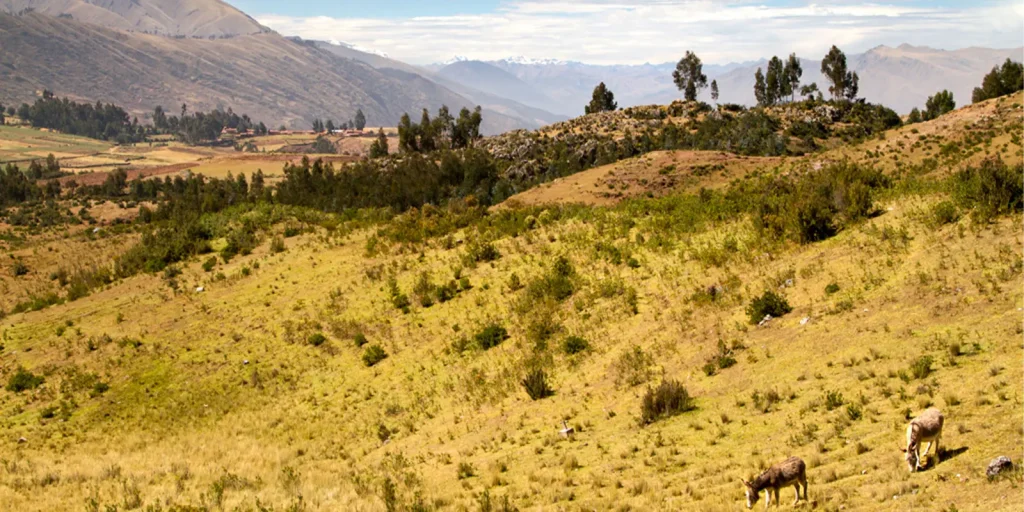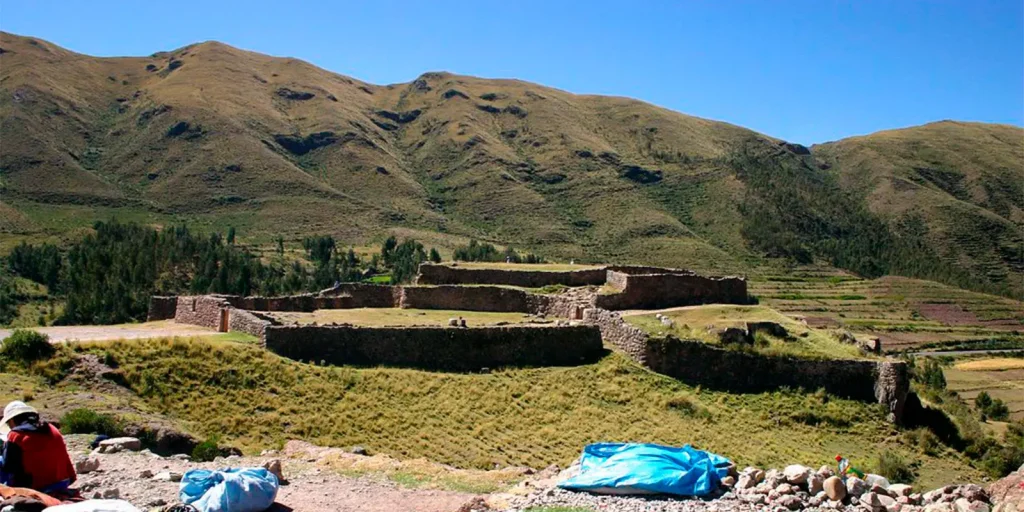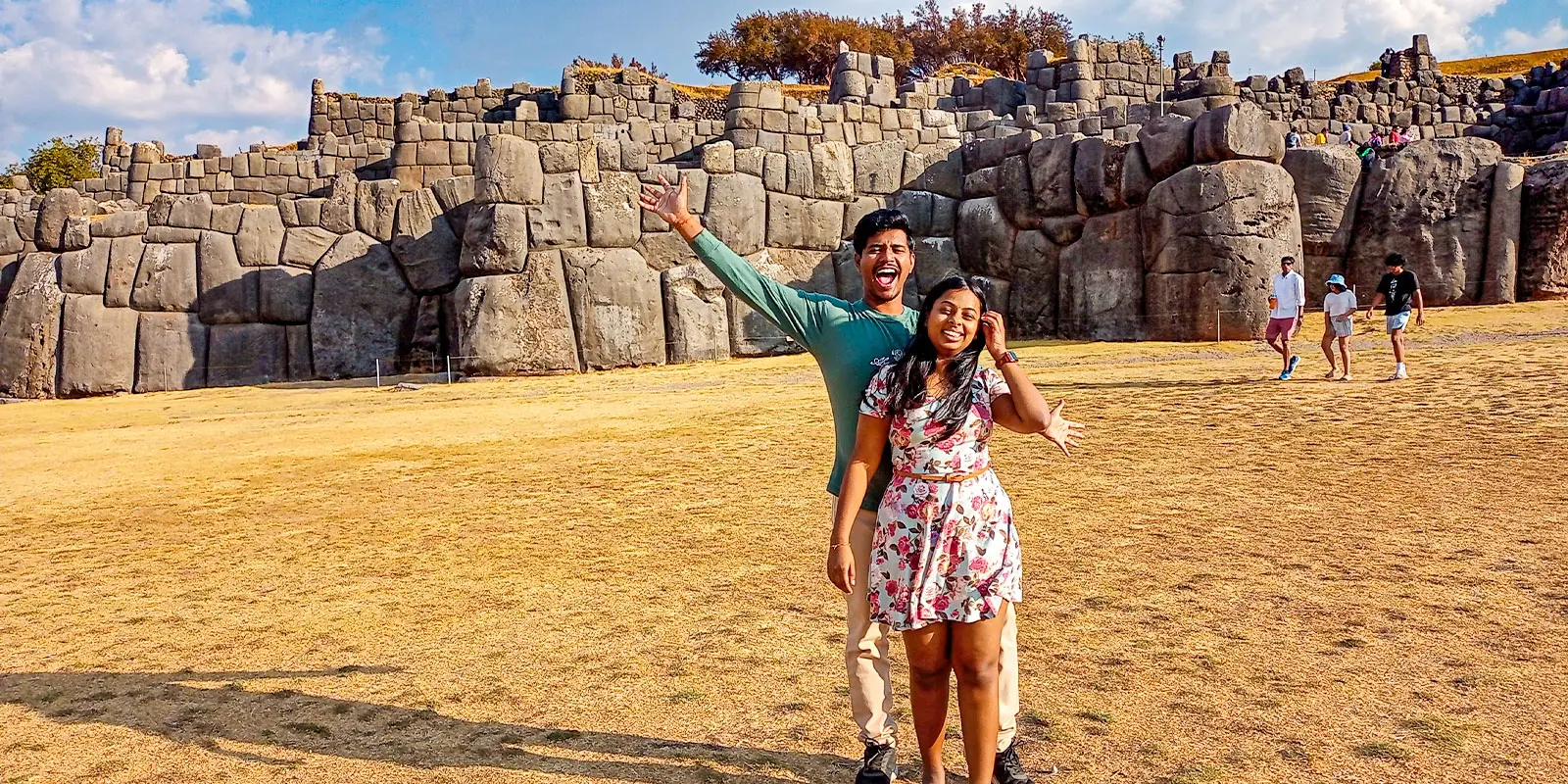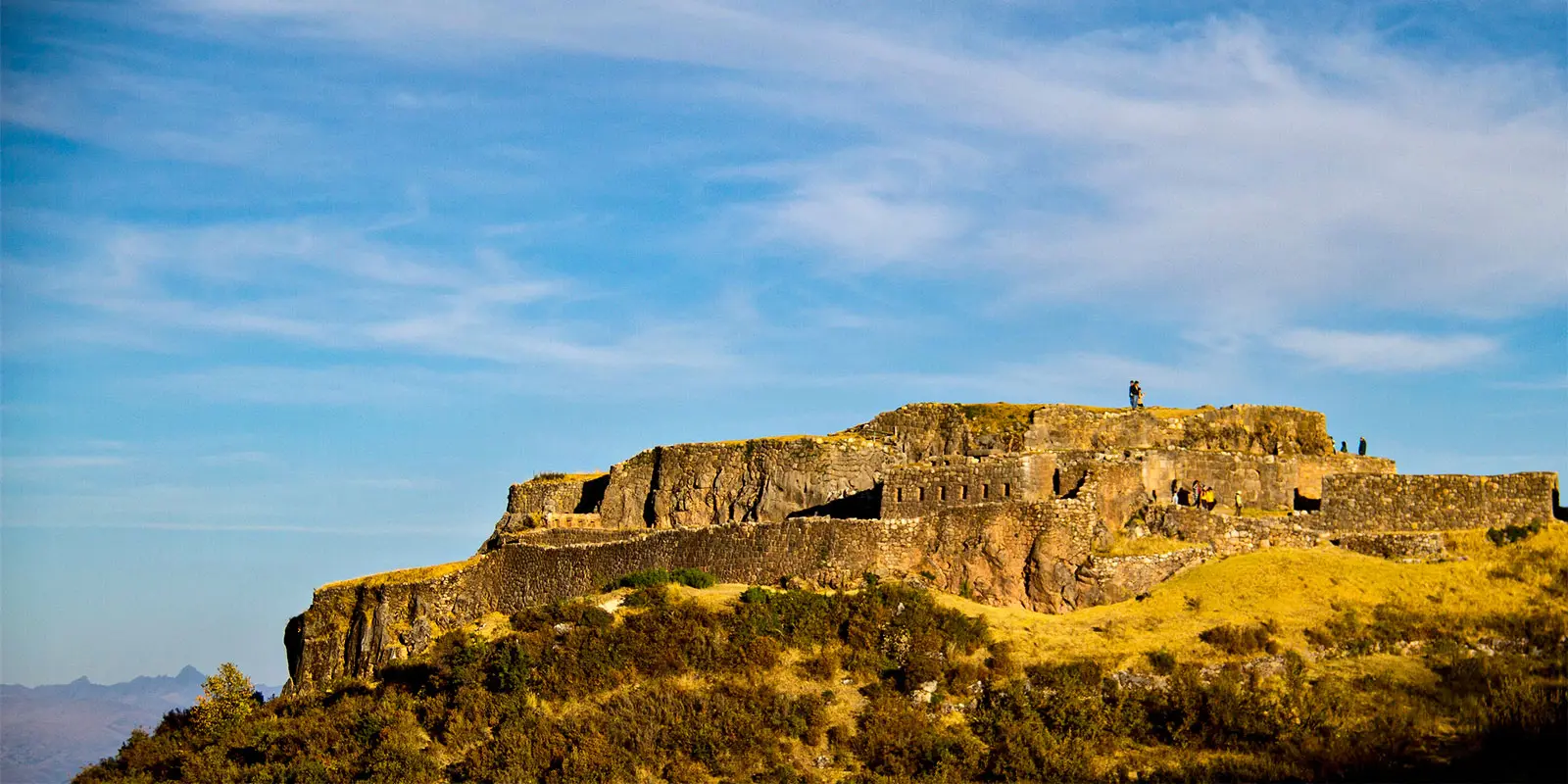Puca Pukara is located on the top of the road to Pisac, about 7 km from Cusco City. The name Puca Pukara means Red Fort, red because of the color of the stones. In Puca Pukara there are inner plazas, baths, aqueducts and an old Inca Road. The buildings are made of stones that come in many sizes medium-small, the rocks are very irregular, compared with other archaeological sites, like Machu Picchu and Sacsayhuaman. There are many questions as to why the site was built but we still do not have the answers. Located between the ruins of Qenqo and Tambomachay, Puca Pukara is an interesting ruin with wonderful views.
History Puca Pucara
Puca Pukara is an archaeological complex dating back to the 15th Century. It is believed to have been built during the rule of the emperor Pachacutec, who reigned in the 15th century, it is also said that it was one of the emperors last temples that he constructed. The volcanic stone used in its construction, known as andesite, is abundant in the area, gives the site a unique and striking appearance. Now, the Puka Pukara archaeological center is open to the public. Visitors can explore the different structures and learn about the history and culture of the Incas.

Function
The exact function of Puca Pukara has never been confirmed, but it is believed to have served as a military checkpoint or a type of lodge, a place of rest and lodging for Inca travelers and messengers. For some chroniclers, Puca Pukara was a place closely linked with Tambomachay. While the Inca relaxed in the baths of TamboMachay, his soldiers and priests rested in the fortress of Puka Pukara. Others believe both were used for the Inca to go hunting.
What you will see at Puca Pukara?
The archaeological site of Puca Pukara has squares, stairways, walls, aqueducts and terraces. These structures were built with pre-existing stones in place. Archeologists have divided Puca Pukara into three levels or walls with different functions.
- The first wall, is a terrace whose walls feature high quality lines. There are gardens and stone steps. There are housing areas, many have deteriorated over time as these were not built to the same quality.
- The second wall, above the first wall, features a set of stairs, finely carved terraces with gardens and a few buildings. Three trapezoidal enclosures, not rectangular as was the norm with most Inca contractions, stand out.
- The third wall, take the stairs to reach the third wall, most of the buildings have been destroyed. From here you will have a fantastic view of the Andes mountains and their snowcapped peaks.
The main attraction of Puka Pukara is its unique architecture. The site consists of a series of walls, terraces and plazas built by the Inca civilization. The terraces are designed to adapt to the terrain’s topography, creating a visual harmony with the surrounding landscape.
Another popular activity in Puka Pukara is exploring the trails around the site. There are several hiking routes that allow visitors to explore the area and discover more archaeological remains. This makes it an ideal place for taking photographs and enjoying the natural beauty of the region.
Architecture Puca Pucara
Based on studies conducted in the early twentieth century, by archaeologists, it is stated that Inca architecture has been characterized by a series of attributes marked by three principles: symmetry, solidity and simplicity. These principles you will find in most Inca Temples. Unlike the enormous stones that build Sacsayhuaman, Puca Pucara is constructed with rocks of unequal sizes that form the different buildings and is very similar to the style of the Pisac Ruins.

How to get to Puca Pucara
To reach the Puka Pukara archaeological center, there are several transportation options.
If you are in the city of Cusco, the most common way to get there is by taxi. You can take a taxi from the city center the journey to Puka Pukara usually takes around 30 minutes, depending on traffic. It’s important to agree on the price with the taxi driver before getting into the vehicle, also agree that he waits for you to return.
If you enjoy a walk, you can also hike to Puka Pukara. There are routes that lead from Cusco to the archaeological center. This option is ideal for those who enjoy nature and want to explore the landscape at their own pace.
Finally, an excellent alternative is a city tour that provides a comprehensive experience. This tour offers safe transportation, informative guides and the opportunity to explore various historical points of interest in the Cusco region, including Puka Pukara.
Weather and Altitude
Puca Pukara has a temperate climate, hot during the day and cold at night. In the mornings and afternoons, it can reach 22C (71.6F). Due to its location on top of a mountain, gusts of wind are also common. At night the temperature can drop to 1C (33.8F). January, February and March are the months with the most rainfall, while May, June, July and August are the months with the least rain.
Puca Pucara is 3,580 meters above sea level (11,745 feet). At that altitude it is normal for the visitor to feel some of the symptoms of altitude sickness, which are headache, nausea and fatigue. To overcome this, it is recommended to drink plenty of water (especially coca tea) as well as avoid alcoholic beverages and fatty foods.
Cusco Visitors Ticket
To enter the ruins of Puca Pukara and the other ruins close by, you will need a Cusco Visitors ticket. You can buy these tickets when you arrive into Cusco. The ticket allows you entry into some of the best sites around Cusco and also the Sacred Valley. You can also buy a partial ticket at the entrance to the ruins in the Sacred Valley. It is advised to buy the full visitors’ tickets if you plan to visit Cusco and the Sacred Valley.

Sacsayhuaman & Pisac Day Tour
The Sacsayhuaman and Pisac Day Tour focuses on 2 of the most important archeological sites in Cusco, Sacsayhuaman and the Inca Village of Pisac, with its impressive Incan Ruins above the city. Sacsayh ....
What to bring
When planning a visit to Puca Pukara, it’s crucial to carry some essential items to enjoy the experience at this ancient Inca site. Here’s a list of what you should consider bringing:
- Water and snacks: Drinking enough water and eating light snacks can help you stay hydrated and energized, especially if you plan to walk a lot.
- Appropriate clothing: The weather can be variable, so it’s wise to wear layers that you can add or remove as needed. Include a waterproof jacket in case of sudden rain.
- Sun protection and hat: The altitude in Cusco and its surroundings can make the sun particularly strong, so remember to use sunscreen and a hat to protect yourself from the sun.
- Comfortable footwear: Wear hiking shoes or any comfortable, sturdy footwear suitable for walking on uneven surfaces.
- Camera or smartphone: Puca Pukara is a site full of natural beauty and history, so you’ll want to capture images of your visit.
- Cash: Although entrance to Puca Pukara may be included in a Cusco tourist ticket, it’s helpful to carry some money in case you want to buy souvenirs or require extra food or drink.
- Personal documentation: Carry your passport or a copy of it, especially if your visit is part of a tour or if you need to identify yourself to use a tourist ticket.
The ruins at Puca Pukara are well worth the visit, see the differences from the other temples and hear the history of the site. Feel the presence of the ancient Inca. Take in the views and the beauty of the high Peruvian Andes, experience the bluest sky that you will ever see, all at Puca Pukara.






